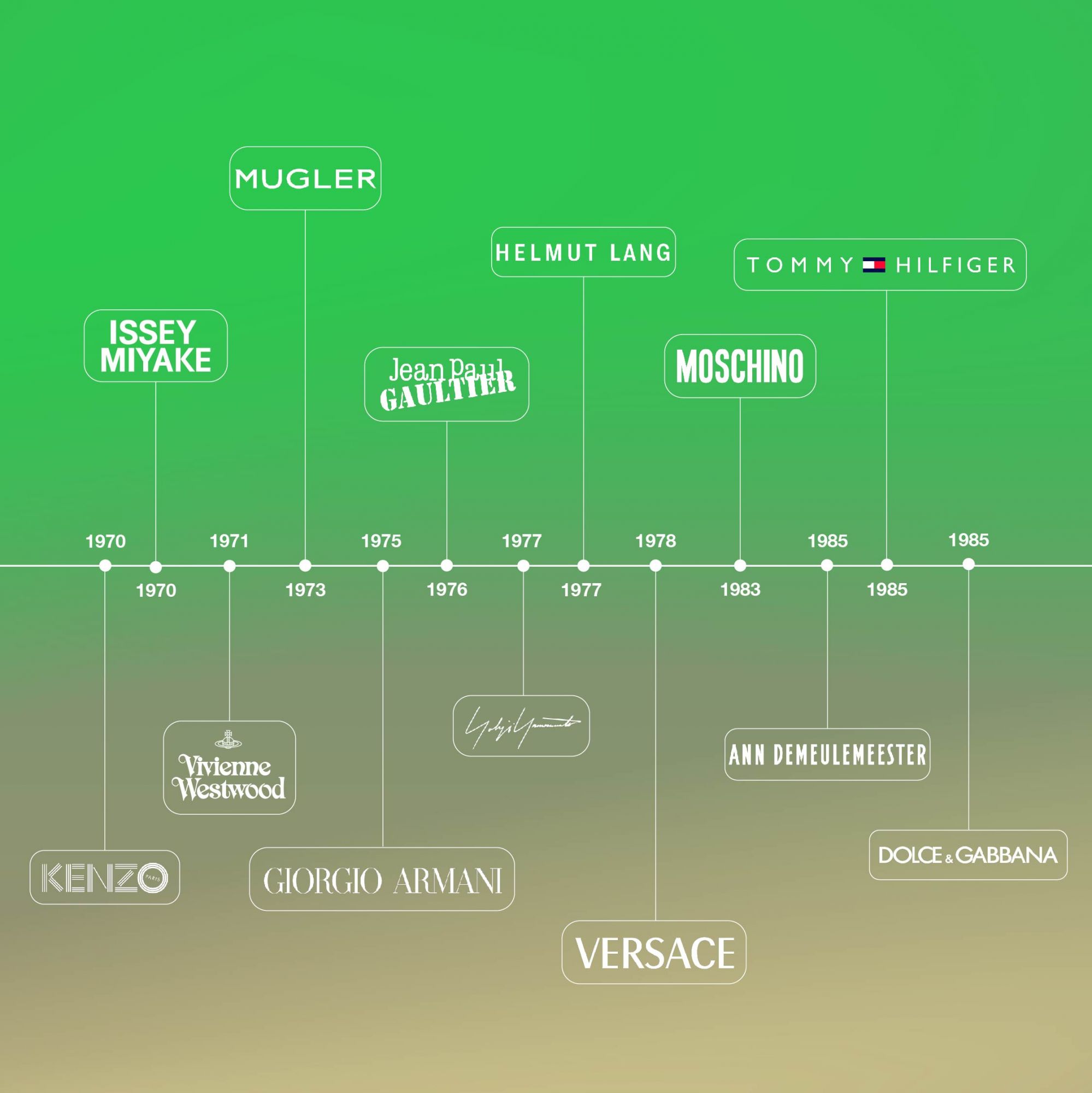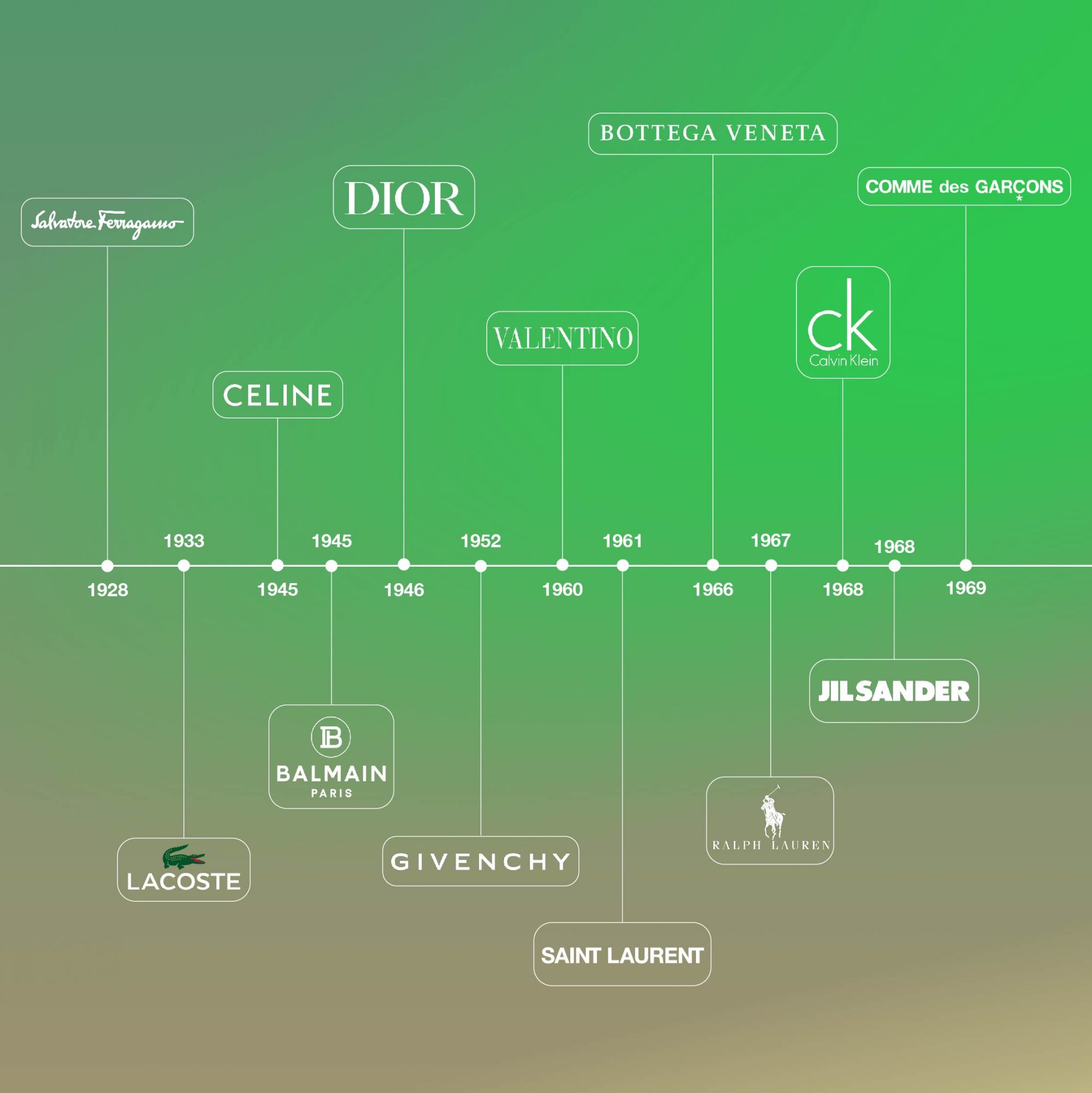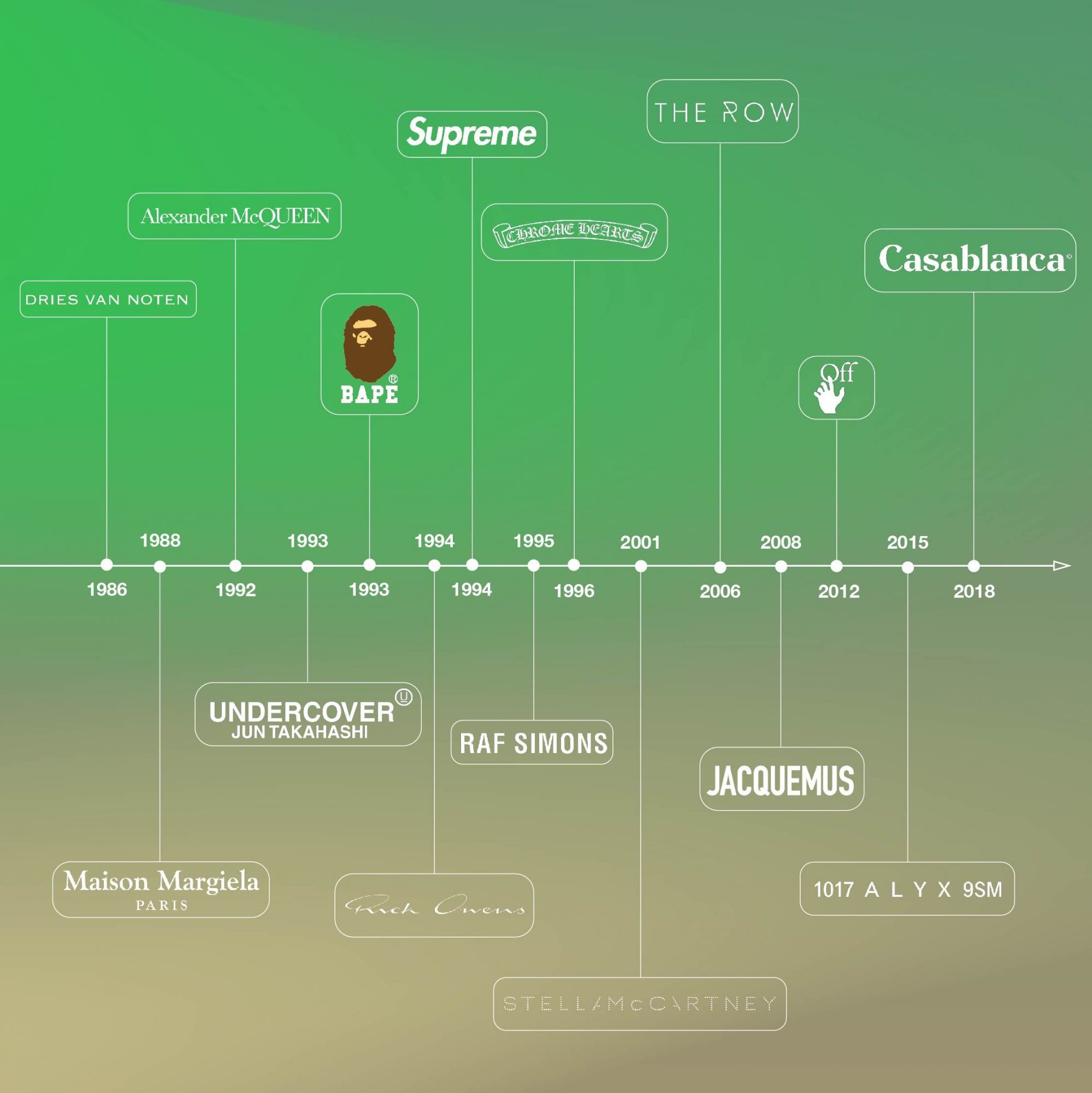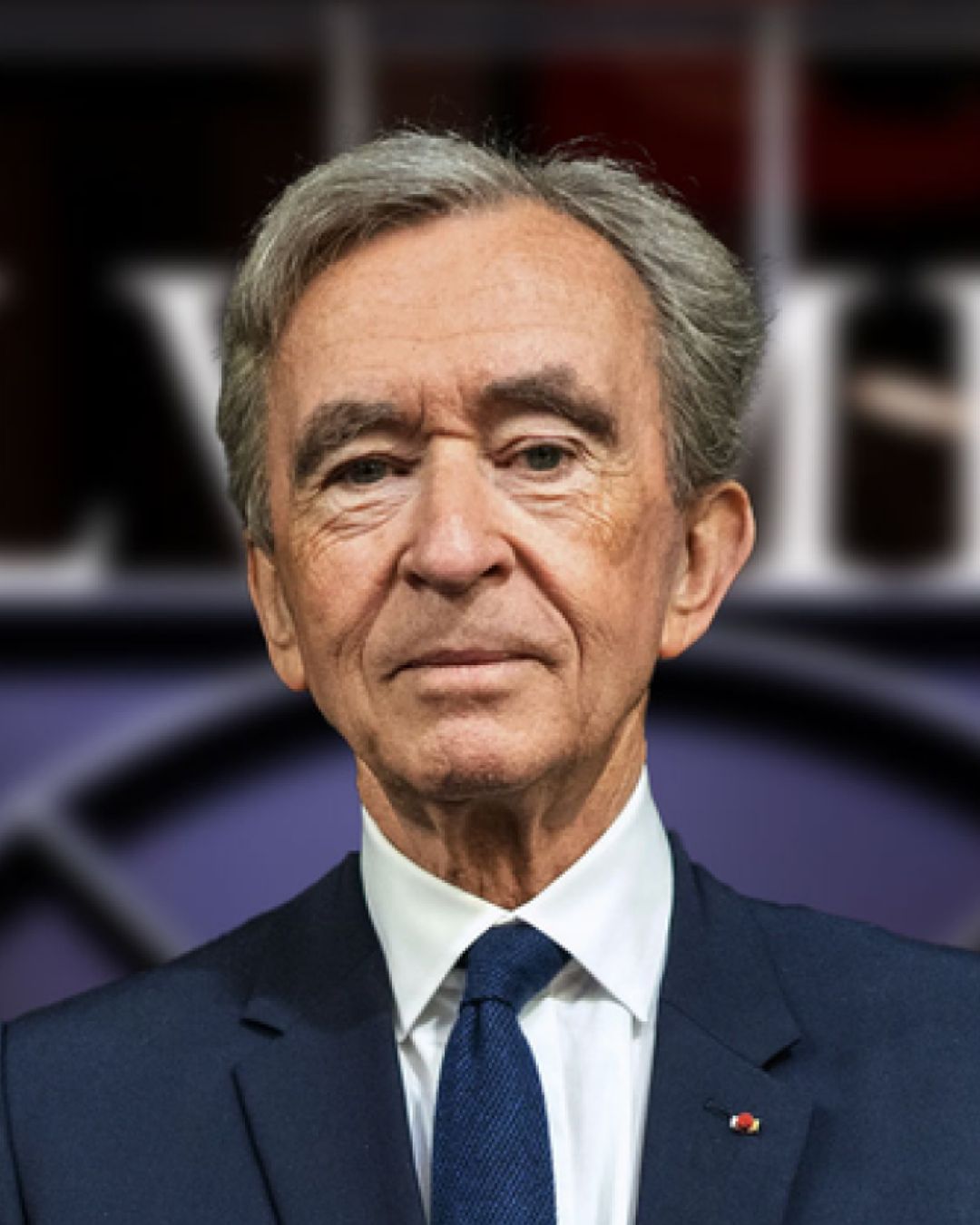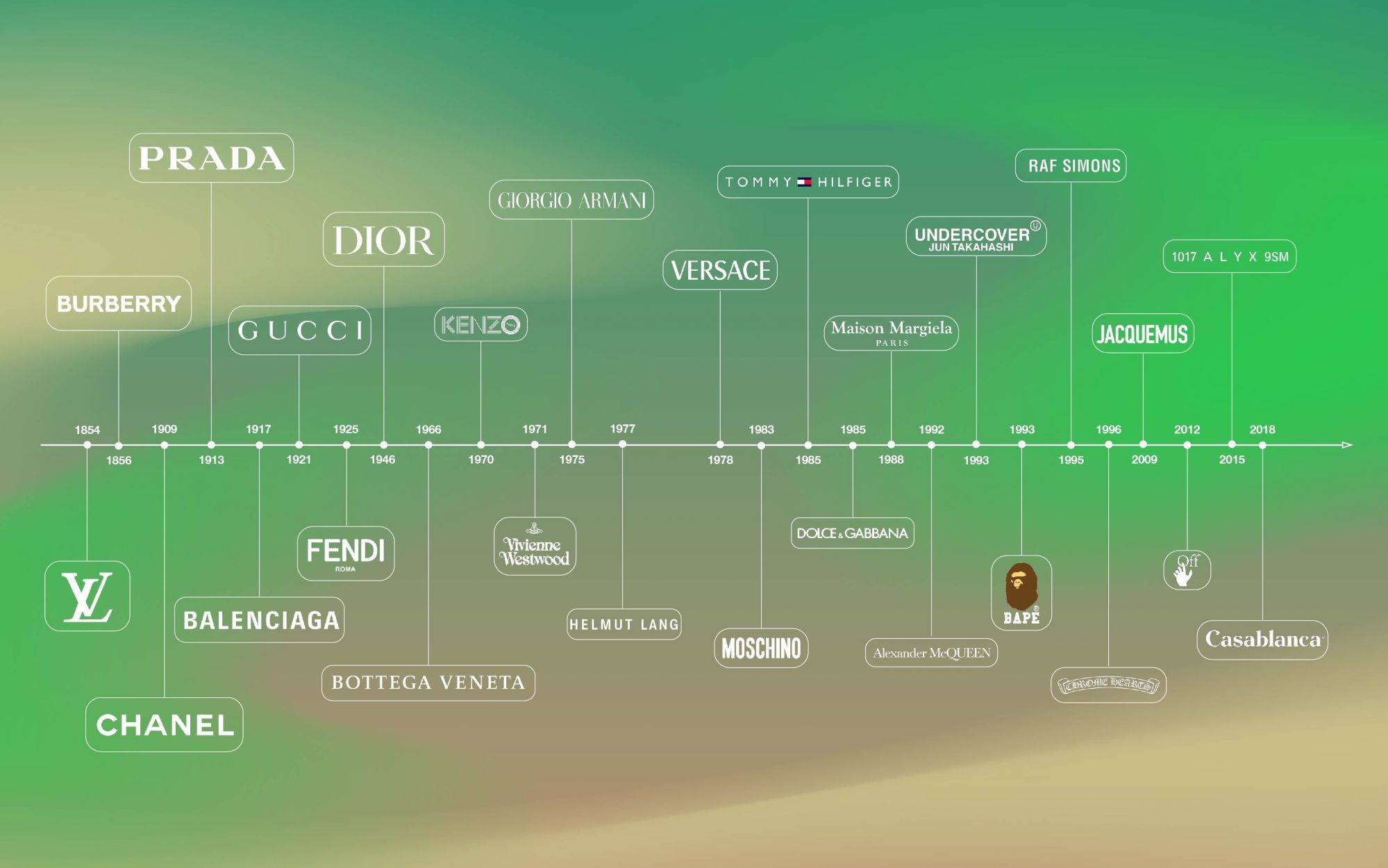
What are the oldest fashion brands? A timeline of fashion history through its most famous names
Last Thursday, Gucci celebrated its 100 years from its foundation, celebrating the anniversary with a new collection and the epic Aria show. One hundred years is a long time for a brand, having overcome them always remaining on top of its game is certainly a demonstration of the strength of its heritage and, of course, Gucci is not the only large fashion house to have passed the century. Indeed, if we wanted to group brands according to the year and decade of birth, we could see, through the chronology, the evolution of fashion and the concept of luxury over the last hundred years. The most traditional luxury brands, in fact, are all grouped at the beginning while, as we proceed towards the present, you can observe the birth, often contemporary, of the different currents and aesthetics of fashion in different points of the globe. A perfect example would be 1985, the year of grace in which both Tommy Hilfiger and Ann Demeleumeester and Dolce & Gabbana were born. But let's proceed in order.
The classics of luxury: 1818-1925
The oldest and most active fashion brand is Brooks Brothers, which in April 1818 opened its first store in Manhattan and which, when the First World War was over, already had a century of history behind it. It is closely followed by all the great luxury brands that we still know today: in 1837 Hermès was born, about ten years later Loewe and Cartier were founded, respectively in Madrid and Paris. By the middle of the century, the great mallettiers of Paris, Goyard and Louis Vuitton, Burberry in England and Bulgari in Rome also arrived in quick succession. Instead, it will be necessary to wait until the last year of the century for Jeanne Lanvin to found the eponymous brand, followed, ten years later, by Coco Chanel. Between 1910 and 1913 the Italians Ermenegildo Zegna and Prada were born (who shares, with Loewe, the honour of having been the official supplier of the Royal House of the time). Balenciaga and Gucci were born five years later, one was born as a couturier and the other as leather goods, while Fendi, born in 1925 as a fur company, closed this first period.
From classicism to modernity: 1928-1969
This time frame is perhaps the most indicative of how luxury changed within forty years, divided in the centre by World War II. Salvatore Ferragamo, already with a long experience in Naples and the USA, founded his company in 1928, after opening his first Florentine workshop the year before. Already in '33, however, Renè Lacoste appeared on the scene with his tennis chemise – officially inaugurating luxury sportswear. The brands born over the next twenty years were innovative for their era but always remained classic: Celine, Balmain, Dior and Givenchy, all born in the post-war period. With the 1960s came the first two disruptors: Valentino Garavani in the 1960s and, the following year, Yves Saint Laurent. In 1966 in Vicenza, Bottega Veneta began to rethink the way of assembling leather with its woven pattern while close to the explosion of summer of love, high society in New York began to get dressed by Calvin Klein and wear the first ties of Ralph Lauren. Two revolutionary women close this era in areas far from the fashion capitals: in 1968 Jil Sander inaugurated his ultra-minimalist brand in Hamburg; while the following year, in Tokyo, Rei Kawakubo founded the revolutionary Comme des Garçons.
The age of disruptors: 1970-1985
After Kawakubo opened the door to Japanese fashion, Kenzo Takada and Issey Miyake immediately followed in 1970 creating the first wave of Japanese designers to move to Paris. Meanwhile in London, at 430 Kings Road, London, the myth of Vivienne Westwood and punk rock began and two years later Thierry Mugler signed his first collection in Paris. Two more years and Giorgio Armani would open his atelier in Milan, followed the following year by Jean-Paul Gaultier and, in '77, by the huge duo Helmut Lang and Yohji Yamamoto. Gianni Versace closed the decade by opening his own label in '78. Proceeding in the 1980s, Franco Moschino opened his brand in Milan and, in 1885, it was the turn of Tommy Hilfiger, Ann Demeulemeester and Dolce & Gabbana, all born in the same year.
Our years: 1986-2018
The Belgian wave of the 1980s grew with Dries Van Noten and Martin Margiela, while, back in 1992, Alexander McQueen founded his brand in London and Nigo and Jun Takahashi opened A Bathing Ape and Undercover respectively in '93, in Tokyo. '94 marked the debut of both Rick Owens and Supreme, the following year Raf Simons and the following year still sees the birth of Chrome Hearts – an important moment that marked the expansion of the concept of fashion and luxury outside the classic fashion circles, the brand was in fact based in Los Angeles, largely artisanal and did not produce seasonal collections. Stella McCartney opened the 2000s with her pioneering idea of sustainable fashion, which needed another twenty years to enter the mainstream, while in 2006 the Olsen twins created, with The Row, one of the first luxury brands for millennials; three years later the social phenomenon of Jacquemus began silently while, starting in 2012, Off-White, 1017 Alyx 9SM and Casablanca – recently become the new protagonists of Paris Fashion Week – were born.










































